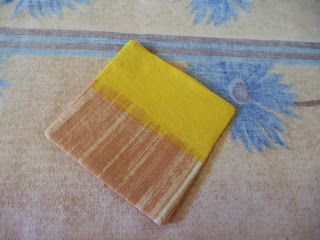September 1, 2019
Art has fascinated me from childhood. As a kid I would draw and make simple greeting cards. When we use to go to my grandmother's place, I would take out all the wedding invitation cards and save those beautiful Ganeshas on them to draw. None of those folks would know that I cut the Ganeshas out of their wedding invitations before the cards go into trash. I must say some of them really spent a lot of money on those invitation cards. Then there was stencil and spray work, the wall hangings we made by bending the glass bangles, the modern Aipan where we would spend hours sitting at the Dehali (the door threshold). This blog has the most recent sewing crafts that I also learnt as a kid watching my grandfather, aunts and mother do. All my life I wore clothes mostly sewn by my mom or aunts. I bet they could open an etsy like store if they accepted their talents.
I joined a clay sculpting class recently where we make Indian clay art - specifically Hindu god sculptures. I had been thinking of taking this class since last 2 years but the time commitment didn't just fit in earlier.
As part of this 3 months class we meet weekly for 2 hours (so far every time the 2 hours got stretched to 5 hours) and then do our work at home. We are making 2 sculptures. This is the first one we made - Shiva's Nandi. Preview of the second one in the end. This class isn't about just doing some clay sculpting, you learn the basics and the science of how these temple sculptures are made. The different standards that are there and how the rocks (if they are sculpted on rock) are picked for each idol etc. The class is a mix of elderly and young folks including a good gender balance. The version below isn't the final product as we would be making the Nandi sit down. The ornaments on the feet are also missing right now if you noticed.
Here is how it looks so far. Completely immersed into the second sculpture so will get back to it in between that. It was interesting to see how much focus one needs to do anything in this work. One of the days I tried to multi task - listening to something while doing this work and it turned out to be a complete disaster. From then on I put my phone away and just focus on it. Will be updating this once the sculpture is finished.

This picture below is how we receive feedback. Notice that a lot of details including the Nandi head is missing in this. Yes, had to remove that blue line of bells after spending a good amount of time making them and putting it on the Nandi.

Adding a few more pictures of the Nandis carved on rock. I don't think I could get it any close to these but I am content with my Nandi.
[Update: Jan 1, 2020]
Here is how the completed Nandi looks. It has found a nice spot on my book shelf alongside the Shiva.



We are sculpting a Hindu God as part of the second sculpture. Below are the hands I made for the chaturbhuj bhagwan. Note how I have not made any mudras yet, bending those fingers is tough without breaking them.







































